Vucedol Culture Museum and the City: Free Entry for Vukovar Residents
December 32, 2022 - Though it has been visited by more than half a million visitors from Croatia and abroad since its opening in 2015, the Vucedol Culture Museum remains one of Europe's most underrated museums. The stunning architecture, unique location, the modern exhibition and exciting events deserve all the attention. A place with a soul like that, though, will no doubt go a long way.
As Glas Slavonije writes, the archaeological site of Vučedol is one of the most significant archaeological sites in Europe. For visitors of all generations who want to experience something new, beautiful, and interesting, the Vucedol Culture Museum offers a new universe of discovery and inspiration, with an incomparable and unrepeatable combination of location, architecture, pleasant atmosphere, and, above all, archaeological and historical values presented in a contemporary way.
It is not surprising that from the day it opened, the museum became an important place in the tourist offer of Vukovar, so many domestic and foreign tourists who visit the city on the Danube do not miss the opportunity to learn something about the locality itself and the history of the area. The museum employees help with their knowledge and presentation of the exhibition. Furthermore, they pointed out that a few changes await the citizens in the first days of 2023 and shared some good news for the residents of Vukovar.
"From 1st January, entry to the museum will be free for all Vukovar residents. It is enough to present an identity card as proof of residence. During the seven years since the museum's foundation, many fellow citizens have visited us, so we would like to thank them for supporting us. Also, the people of Vukovar visit the museum together with their guests and remain the best promoters of their city", pointed out the head of marketing Darko Bilandžić.
Since its opening on June 30, 2015, the museum has been visited by more than half a million visitors, making Vucedol one of the most visited museum institutions in Croatia.
During that period, it received several awards for its work and many activities in Croatia and abroad. Not so long ago, the first international scientific and professional conference on the meaning of Vučedol culture was also held in Vukovar.
For more, make sure to check out our dedicated Lifestyle section.
Rijeka City Museum Nominated for Title of European Museum of the Year
December 15, 2022 - The Rijeka City Museum has been nominated for the flattering title of European Museum of the Year. The competition is fierce, and the winner will be announced at the conference of the European Museum Forum in Barcelona in May 2023.
As Poslovni / HRT write, the Rijeka Museum will compete for the title of the best with 32 other European museums. This is the first nomination at the European level.
"This would be the greatest recognition and success, but being nominated is a success in itself. Even the nomination for an Oscar counts, and we already had two awards from the Croatian Museum Society," said Ervin Dubrović, director of the Rijeka City Museum. Those were for the exhibition of restored works by Gustav Klimt and Merika - an exhibition dedicated to emigration. The permanent display in the magnificent Sugar Refinery Palace also received awards. It covers two floors and thirty rooms.
In the museum, you can learn about the first torpedo in the world, the history of the theater, or the legendary rock music scene in Rijeka, which is only the beginning of the story. The home of the permanent museum exhibition has been attracting many curious visitors for two years since its opening.
"In two years, 32 thousand people visited the Palace. From the beginning, it was our fellow citizens who wanted to see the new city attraction; tourists came to the fore later," says Velid Đekić, head of public relations at the Museum of the City of Rijeka.
This is not an empty, lifeless space; quite the opposite! It breathes and lives alongside its fellow citizens; many find inspiration in the space. "The sugar refinery is a representative object that we found fits very nicely with our models, which will fit well into the space so that they can show all their beauty," pointed out Renata Štefan Barišić, a professor at the Rijeka Trade and Textile School.
The European Museum Forum will decide the best museum on our continent, and the winner will be announced in May next year.
For more, make sure to check out our dedicated Lifestyle section.
Award-Winning Batana Museum in Rovinj to Reopen in April 2022
February 10th, 2022 - Surely one of the most charming cultural attractions in Croatia, the museum dedicated to Rovinj’s traditional 'batana' boats is set to reopen after a two-year renovation
The award-winning House of Batana in Rovinj closed its doors in late 2019 so that the building could undergo a series of renovation works. As reported by TCN at the time, the attraction was set to transform into a 21st-century museum and get a new exhibit that was to be fully digitized.
Two years later, the museum has got a new facade and fixtures, and the only thing left to do is for the new permanent exhibit to be installed in its place. If all goes according to plan, the attraction is supposed to reopen in April 2022, reports Morski.hr.
In 2016, the Batana Ecomuseum project was inscribed in the UNESCO’s World Register of Good Safeguarding Practices. It was recognised for its unique approach to preservation of the tangible and intangible heritage of Rovinj, based on local initiatives and expert-led development projects. Read more about the old exhibit in our dedicated feature.
The traditional wooden vessel gets its name after the Italian verb battere (hit, beat), associated with the sound of waves hitting the flat bottom of the boat. The batana was entered in the Register of Cultural Heritage of the Republic of Croatia in 2008.
The renovation of the museum building cost around 2 million kuna. The equipment and the multimedia fixtures were partially funded through the project Culturecovery Interreg Central Europe, whereas the project Arca Adriatica Interreg Italy-Croatia helped finance the graphic design and multimedia.
Revamped and fully modernised, the House of Batana is supposed to open its doors at the end of April, and visitors can look forward to a number of new attractions; for example, old traditions of Rovinj and its natural heritage will be presented through the use of VR. The new exhibition will tell the story of batana and Rovinj-Rovigno in a modern and inspiring way, pushing its own boundaries and opening new horizons.
The objects from the original permanent exhibit were restored in cooperation with the Rovinj Civic Museum.
Croatian Toys Exhibition: Child Nostalgia Project by Zagreb Museums
October 1, 2021 - The Croatian Toys Exhibition "Toys-Childhood Forever", displays toys from as early as the 19th century. Numerous Zagreb museums took part in this project lead by the Ethnographic Museum.
The pandemic and earthquakes caused some setbacks to events and cultural happenings in Zagreb, but art and culture in the capital of Croatia quickly got back on its feet (as culture and art in Croatia are sadly used to harsh conditions).
True, some museums such as the School Museum still await reconstruction, but other museums not only slowly re-opened, a cluster even managed to pull off a suitable programme for International Museum Day earlier in 2021. Zagreb's Ethnographic Museum, along with other museums, continues to keep culture alive both for citizens and visitors.
''Toys-Childhood Forever'' is a project the Ethnographic Museum which started in June and will continue all the way until May 22, 2022.
Eleven guest exhibitions from other museums across the city (in the small gallery on the first floor of the Ethnographic Museum), as well as the central exhibition, have been modified to children (but its not forbidden for adults), and will present traditional, artistic and industrial kids toys manufactured in Croatia from the 19th century until today. These include showcasing the work of noted Croatian artists that worked with known foreign clients and museums.
The author of the project is dD. Iris Biškupić Bašić while the graphic solutions for the exhibitions were managed by Nikolina Jelavić Mitrović. Financial support was secured by the Croatian Ministry of Culture and the Zagreb City Culture Office.
''The project includes animated movies from the production of Zagreb Film within the famous Zagreb School of Animated Film. There are also educational workshops and thematic exhibitions of other Zagreb Museums,'' reads the description on the official Zagreb City website.
It's worth pointing out that the Zagreb School of Animated Film is an iconic animation style that originates from the city and was active from the late 50's to the 80's. The style became particularly respected thanks to Dušan Vukotić and his animated film Surogat, which, as TCN previously wrote, is the only Croatian film to win Oscar Academy Award back in 1962.
Other Museums involved in this project include the Museum of Arts and Crafts, the Croatian History Museum, the Croatian School Museum, the Archaeological Museum, the Nikola Tesla Technical Museum, the Croatian Sport Museum, and the Museum of Contemporary Art.
The authors of the visiting exhibitions are the curators from the aforementioned museums, and noted Croatian toy designers Jasmina Kosanović and Lea Vavra are enrolled in the project too. Until May 22, 2022, both visitors and locals have an excellent opportunity to see the history of children's entertainment as well as a chance to see neat craftsmanship that is no child's play to achieve.
Learn more about Croatian museums on our TC page.
For more about culture in Croatia, follow TCN's dedicated page.
MDC Says Summer Stopped Decline in Museum Visitor Numbers
ZAGREB, 25 Sept, 2021 - A poll by the Zagreb-based Museum Documentation Centre (MDC) covering five Croatian museums which in recent years had the largest number of visitors shows that the two peak months of this tourist season have stopped a steep decline in the number of museum visitors caused by the coronavirus pandemic.
The poll shows that the Pula-based Istria Museum of Archeology, the Split City Museum, the Dubrovnik Museums, the Museums of the Croatian Zagorje, and the Zagreb-based Klovićevi Dvori gallery saw an 84.9% increase in the number of visitors compared to the same period of 2020, which accounts for 70% of visitors to those museums during the last pre-pandemic summer of 2019.
The MDC says that a favourable epidemiological situation and good tourism results in July and August 2021 have strongly reflected on the number of museum visitors but notes that the actual contribution of this year's tourist season to museums' results in 2021 will be known only in early 2022.
Kocijan: Most visited world museums still far from being optimistic
The world's most visited museums have still not published data on visitor numbers in the first months following lockdown lifting but MDC director Maja Kocijan says they are certainly far from being optimistic.
Unlike Croatian museums, museums elsewhere in Europe were closed this year as well and once the lockdown was lifted, most of them have had to comply with much stricter epidemiological rules, she said.
Kocijan is not optimistic about the overall figures for Croatia for this year.
"The dramatic drop in visitor numbers and income was stopped for a while this summer but new waves of the pandemic have extended the biggest museum crisis ever into 2021. The season is over, the pandemic unfortunately isn't, new restrictions are on the horizon and the 84.9% increase in visitor numbers in the Croatian museums most attractive to tourists will be neutralised by the negative statistics caused by the pandemic and (2020) earthquakes," Kocijan said, recalling that one-third of Zagreb museums, including the biggest national museums, were entering the autumn closed, preparing for evacuation so that their post-earthquake reconstruction could start.
For more on lifestyle, follow TCN's dedicated page.
For more about Croatia, CLICK HERE.
Međimurje Gets Museum of Its Intangible Cultural Heritage
ZAGREB, 10 July, 2021 - The museum called "Riznica Međimurja" ("Međimurje Treasures" in an unofficial translation) was formally opened in the city of Čakovec on Friday evening.
The HRK 40.8 million museum is situated inside the reconstructed medieval fortification of this biggest city in the northern Croatian region of Međimurje.
The 2,700-square-metre-large museum contains artefacts and historical records concerning the local history, heritage and legends, including the heritage concerning the famous noble Zrinski family.
The museum was formally opened by County Prefect Matija Posavec.
As much as 85% of funds for this €5.5 million investment came from the European Union's funds.
For more on lifestyle in Croatia, follow TCN's dedicated page.
For more about Croatia, CLICK HERE.
Varazdin Old Town Nominated For Croatia's Second European Heritage Label
January 11, 2021 – Comparable to UNESCO's World Heritage List, the European Heritage Label is given to sites that have played a significant in the history, culture and values of Europe. If successful, Varazdin Old Town will be only the second site in Croatia to receive the classification
They say that Northern Croatia has more castles, fortresses and stately homes than any other region in the country. And they are probably right. Not that the names and locations of all are widely known either in the country, and certainly not outside. Truth be told, some of the structures included on Northern Croatia's list of important buildings have lain derelict for centuries. In others, the decline has been more recent. The best way to preserve such buildings seems to come from reimagining them for contemporary use, rather than simply preserving them in aspic or amber.
That is something that Varazdin Old Town does extremely well. All of Northern Croatia's famous castles do this well - Čakovec castle, Trakošćan, Veliki Tabor and Gornja Stubica. It's the reason they are famous. By opening up their doors as museums and event spaces, they attract hundreds of thousands of visitors each year and they get to tell their stories. And the story of Varazdin Old Town makes it perfect for the European Heritage Label.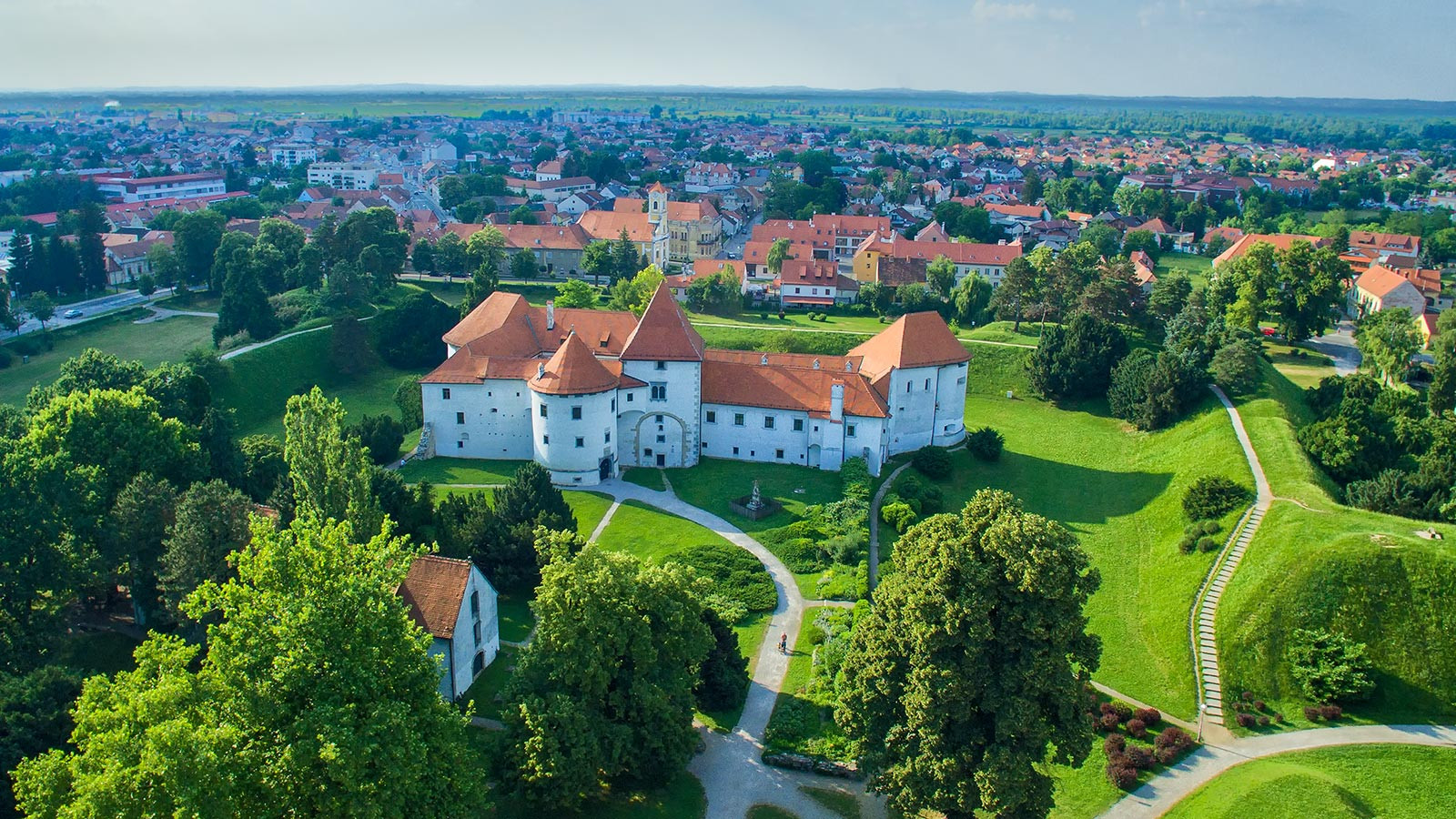 © Ivo Biočina / Croatia National Tourist Board
© Ivo Biočina / Croatia National Tourist Board
Varazdin Old Town is today inhabited by the Varaždin City Museum. They give guided tours around the fortress that was once the full extent of Varazdin Old Town. This city museum is the best way to learn about Varazdin's extraordinary buildings, culture and history. The museum has undertaken this role, and that of preserving items from Varazdin's past, since 1925. It has four permanent exhibitions and six major departments – Archaeology, History, Cultural History, Ethnographical, Entomology and the Gallery of Old and Contemporary Masters, some of which are inside the Old Town fortress itself.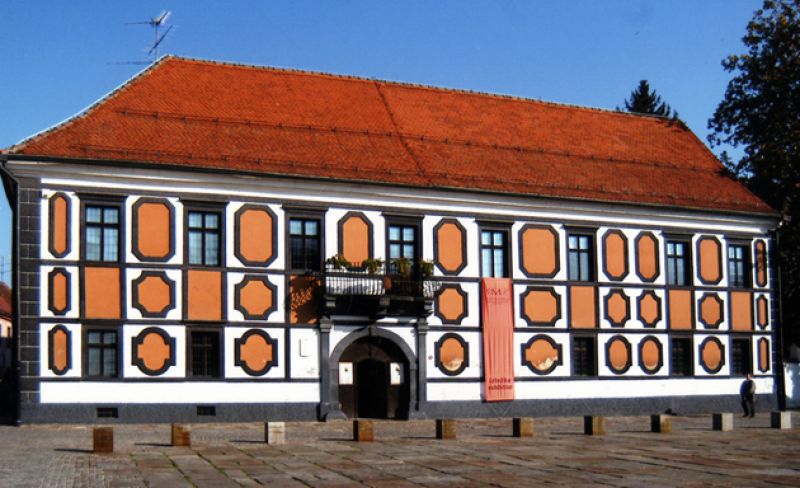 The Gallery of Old and New Masters of Varaždin City Museum © City of Varazdin Tourist Board
The Gallery of Old and New Masters of Varaždin City Museum © City of Varazdin Tourist Board
The Old Town fortress itself is medieval in origin, its construction having begun in the 14th century. Its Gothic towers were added a century later and the collection of buildings was remodelled and added to right up to the 19th century, in response to its inhabitants and its purpose.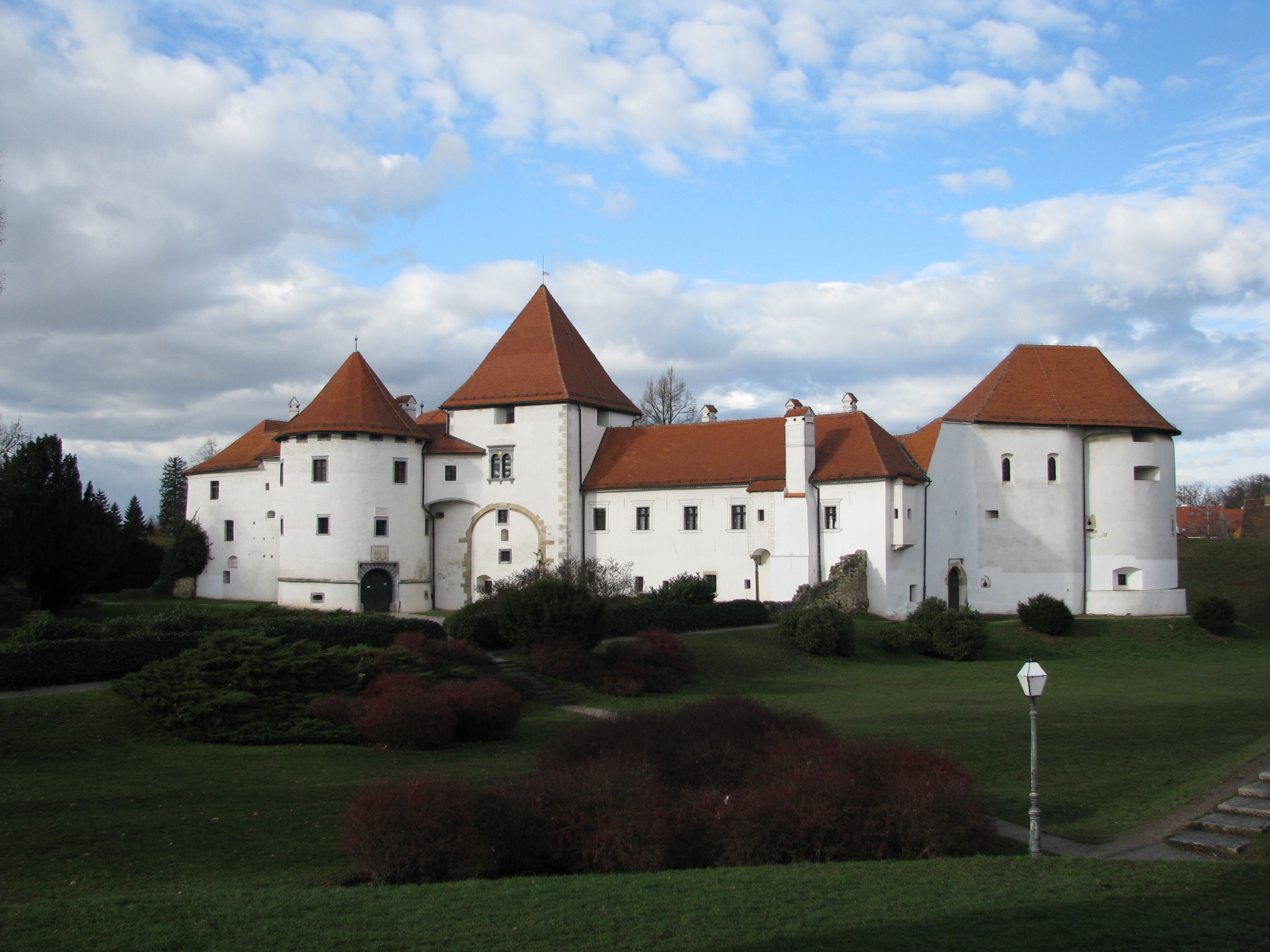 © Ex13
© Ex13
For defence against the Ottomans in the 16th century, it was reconstructed as a Renaissance fortress – high earthen walls with bastions were added, and a double moat. During the past, many noble families have lived here - the Counts of Celje, John Ungnada, George of Brandenburg and Croatian Ban Thomas Erdödyja and his successors. Indeed, Varazdin was once the capital city of Croatia, ruled from these very buildings. In its changing use, architecture and occupancy lies the story of not only the development of Croatia but that too of Europe and it is this that makes Varazdin Old Town eligible for the European Heritage Label.
The European Heritage Label is awarded to sites that bring to life the European narrative and the history behind it. The European Heritage label is currently awarded only every two years. So far, the only site in Croatia to receive the European Cultural Heritage Label from the European Commission is the Neanderthal Museum in Krapina. Its label was awarded in 2015.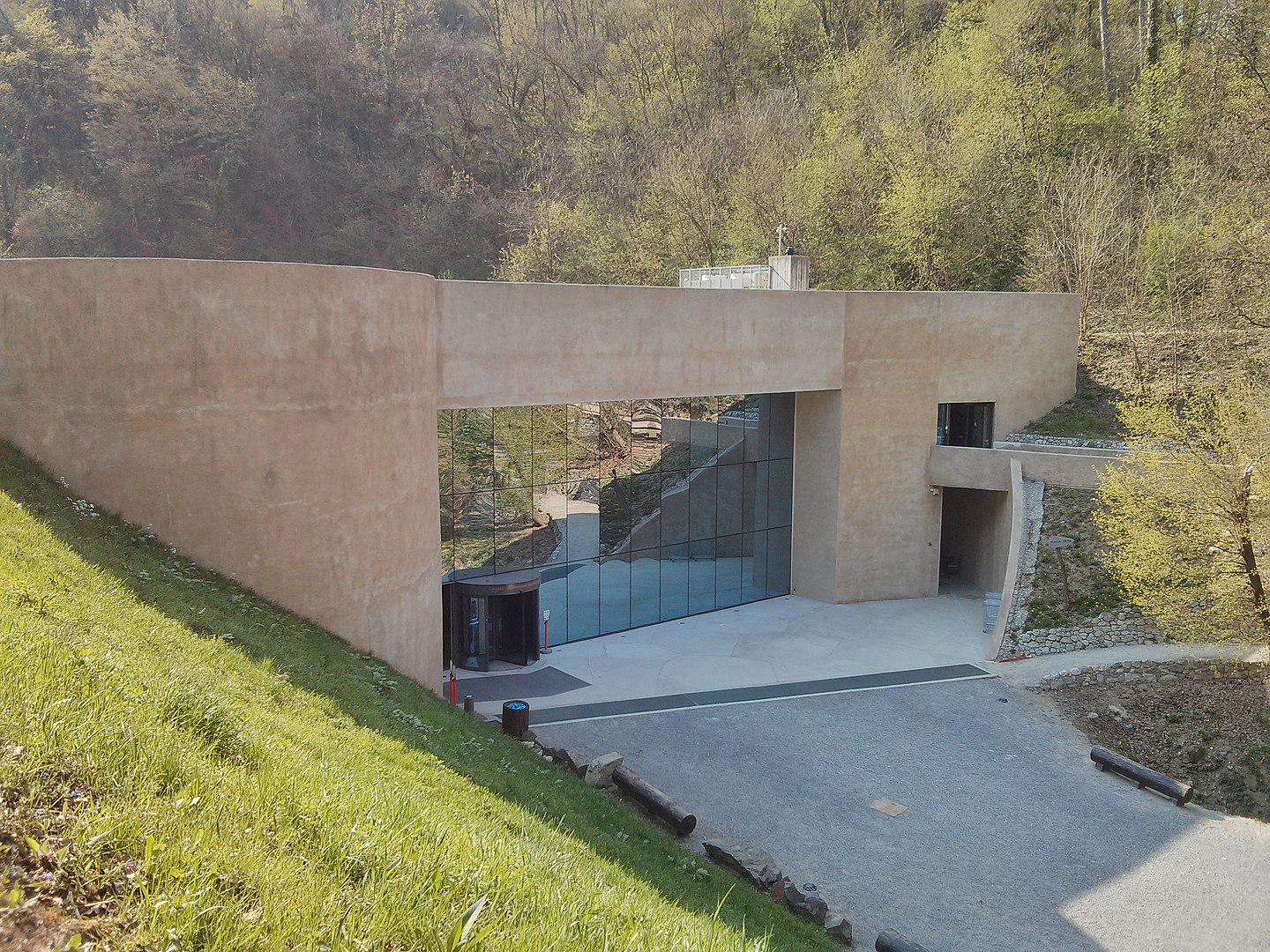 The Neanderthal Museum in Krapina, also in Northern Croatia. It received its European Heritage Label in 2015 © Zeljko Filipin
The Neanderthal Museum in Krapina, also in Northern Croatia. It received its European Heritage Label in 2015 © Zeljko Filipin
Zagreb Lauba's Revolutionary Redesign by World-Famous Japanese Architect
ZAGREB December 13, 2020 – .One of Croatia's best-loved gallery and event spaces will undergo a revolutionary new facelift at the hands of a world-famous architect. Zagreb Lauba's new look comes at the hands of internationally acclaimed Sou Fujimoto. A serial award winner, the architect's prominent works are found all over the world.
Newly-released images of how Zagreb's Lauba will look show an incredibly imaginative redesign. Echoing the avenue of trees that runs by the side of the gallery and event space, Sou Fujimoto has planned an oval-shaped garden roof space for the building in which trees will also be planted. The inspiration for the design came from Zagreb Lauba's name – it is a colloquial word used to describe a certain circular area of trees, the architect being informed of this by gallery owner Tomislav Klitschko.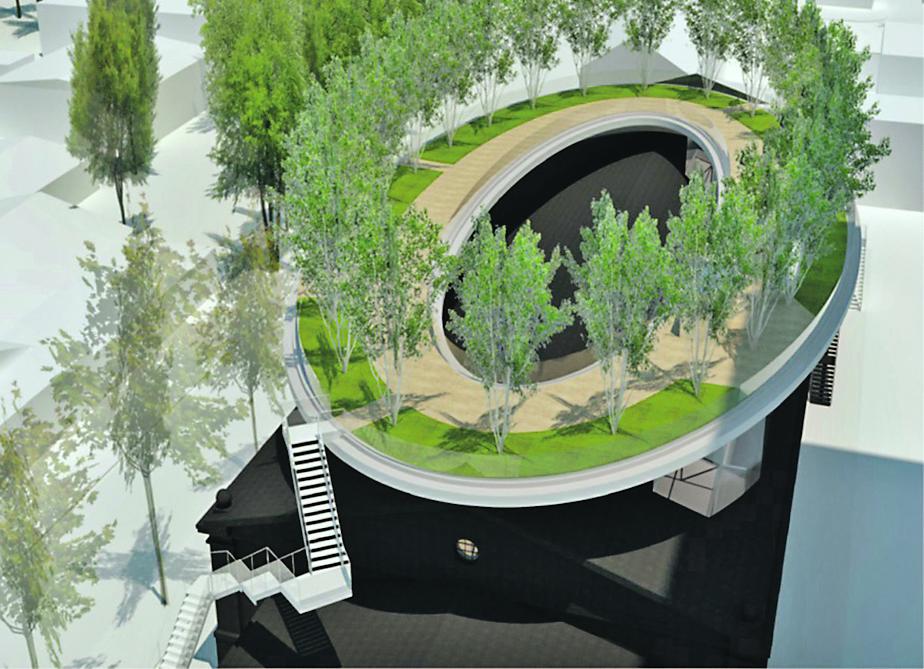 © Sou Fujimoto Architects / Lauba
© Sou Fujimoto Architects / Lauba
According to Jutarnji List's coverage of the redesign, by journalist Patricia Kish, the new roof garden space will be accessed by stairs and lift. Zagreb Lauba's design as it stands today was originally made by Alenka Gačić-Pojatina, who will collaborate on the new additions by Sou Fujimoto.
Zagreb Lauba's story dates back to 1910 when it was constructed by Emil Eisner and Adolf Ehrlich for use as a stables and riding school for the Austro-Hungarian army. It later became the weaving mill of the Textile Combine Zagreb, which it remained until being converted to a gallery and event space in 2008.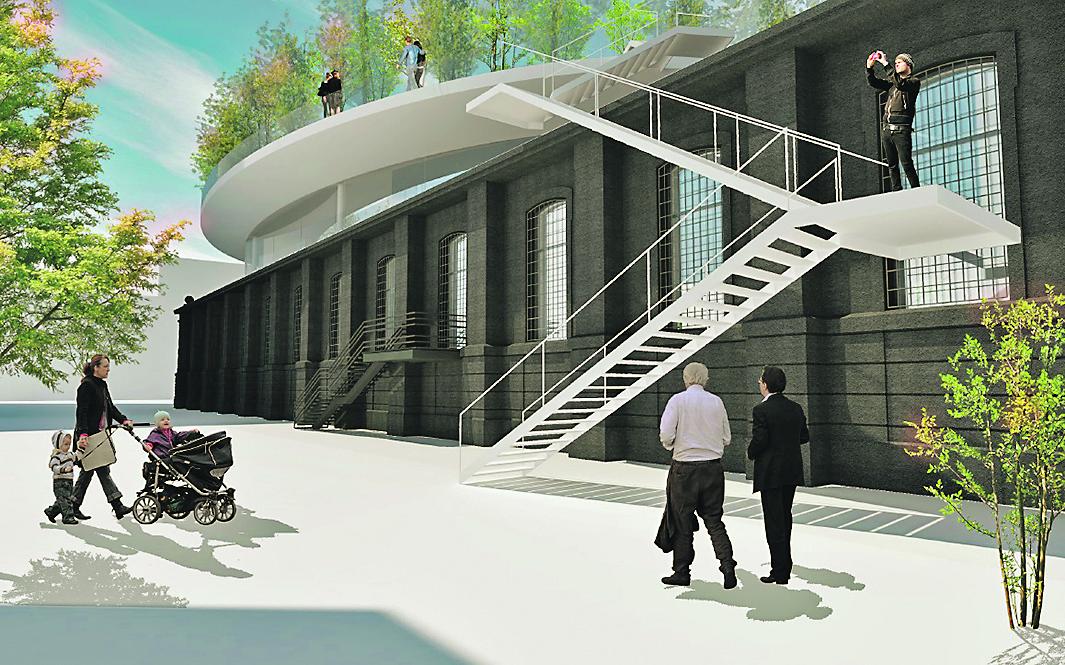 © Sou Fujimoto Architects / Lauba
© Sou Fujimoto Architects / Lauba
Sou Fujimoto is one of the most celebrated architects of Japan. He has won several prestigious awards for his work and the acclaim has made his designs much in-demand around the world. Often working with wood and natural materials, his designs can be found in London, Paris, Budapest and soon, at Zagreb Lauba's hands, in Croatia.
Lauba is a contemporary art gallery and its mission is to discover artistic expression by Croatian visual artists, and also participate in international cultural trends. Set in a huge black building near Črnomerec its exhibitions usually change around every month. In recent times it has also played host to large-scale electronic music events.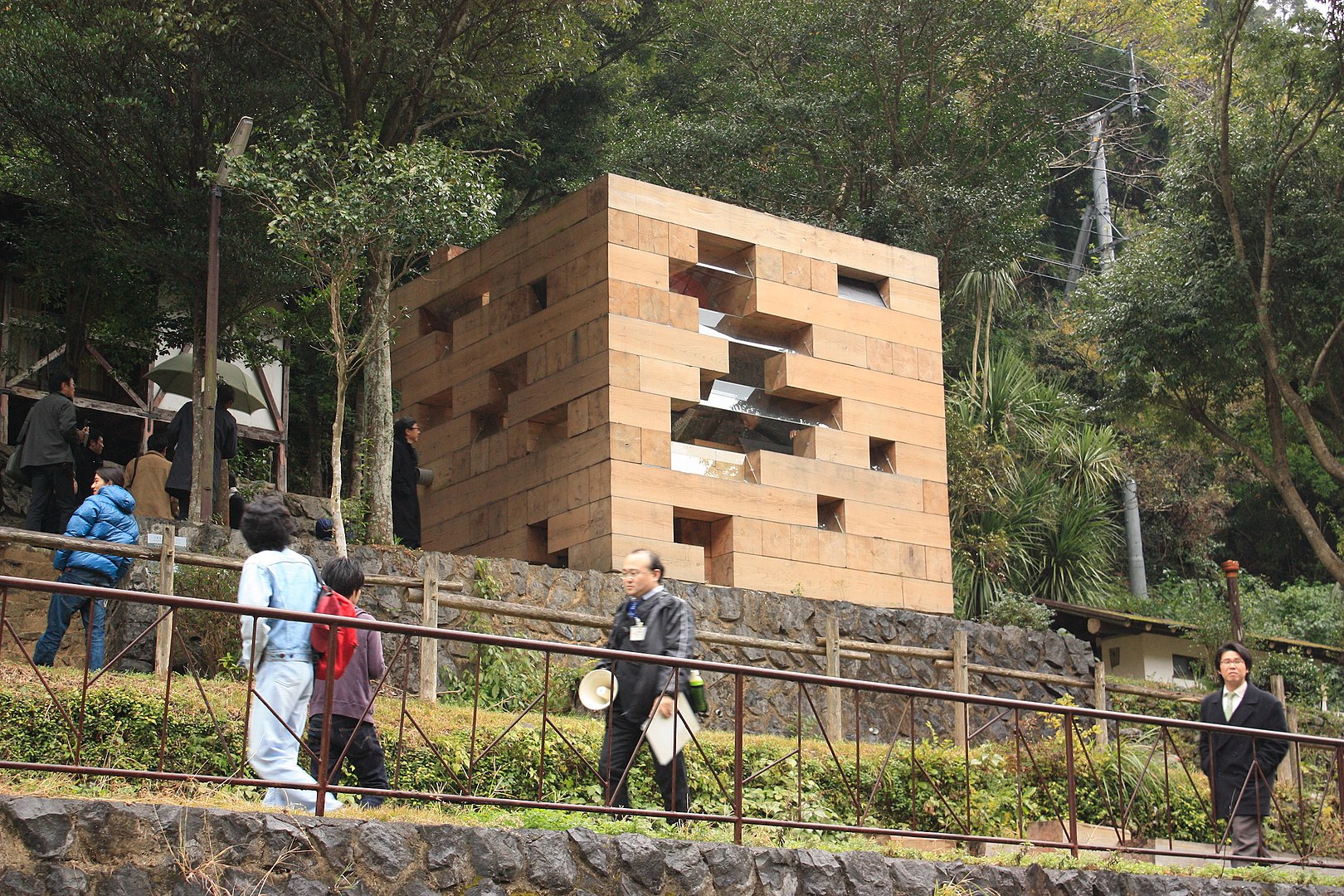 One of Sou Fujimoto's previous designs © Kenta Mabuchi
One of Sou Fujimoto's previous designs © Kenta Mabuchi
European Museum of the Year Award 2018: Meet the Croatian Nominees
Two Croatian museums have been nominated for the renowned award that recognises excellence and innovation in the museum sector
Peek Beneath the Skirt: Croatian Traditional and Vintage Lingerie
No mention of Croatian traditional culture can go without swooning over elaborate folklore costumes that used to be worn in rural parts of the country for centuries. And yet... have you ever wondered what was hiding under those starched white linen skirts and intricately embroidered vests?


